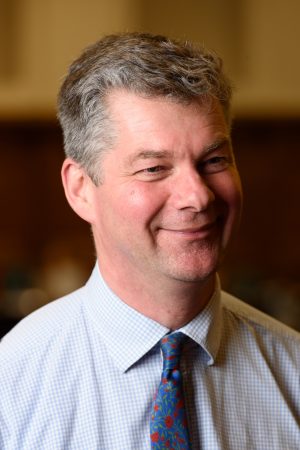
Celebrating a Rich Legacy: Colonial Architecture in India – the Buildings, Their History & Their Future
Wednesday 1 March 2023 at 2.00 pm at the Lowther Pavilion. Guests may attend the lecture – £8 pp (pay on door)
The lecture notes leaflet can be downloaded/printed here
Anthony Peers
Anthony Peers is a freelance historic buildings’ consultant, educated as an Architectural Historian at Manchester University and trained in building conservation at the Institute of Advanced Architectural Studies, York. After two years with SAVE Britain’s Heritage, where he wrote Deserted Bastions, Anthony worked with the English Heritage Listing Division on the review of military buildings. In the mid 1990s he was employed by the DTI in Bombay, India, setting up and running an innovative project to repair George Gilbert Scott’s university buildings and training local architects and craftsmen in conservation techniques and philosophy. From 1998 until 2010, he worked as Rodney Melville & Partners’ historian, involved with research, analysis, assessment and conservation planning at such sites as The Workhouse, Southwell; Aston Hall, Birmingham; The Royal Institution, London and Cliveden. Anthony has also published a book on the History of Birmingham Town Hall in 2012, to critical acclaim. He is a Fellow of the Society of Antiquaries and Deputy Chairman of the Ancient Monuments Society,
This lecture’s narrative revolves around Anthony Peers’ experience of having masterminded a British Government backed project to restore the magnificent George Gilbert Scott designed university buildings in Mumbai (Bombay), India. The chapters of this building’s story- its design (in England), construction, history and, of course, its restoration – provide useful startpoints from which to consider the broader historical, cultural and architectural context. For instance the lecture looks into Bombay’s economic boom of the 1860s. This coincided with the high point of the Gothic Revival: Nowhere else in the world can claim to have as magnificent an assemblage of Gothic Revival buildings. Whilst examining the city’s colonial architecture study is made of the carvings of Bombay’s Jeejeebhoy School of Art, whose Architectural Sculpture Department (during this mid-Victorian heyday) was headed up by John Lockwood Kipling, father of Rudyard Kipling. The story of the award winning project to restore the University of Mumbai’s Gothic Revival buildings provides an opportunity to touch upon philosophical approaches to conservation as well as traditional repair techniques. Account is also given of the work undertaken by those who took time away from their respective Cathedral workshops in the UK to transfer knowledge and skills to their Indian counterparts. Venturing beyond Mumbai to consider key colonial buildings in Delhi, Kolkata (Calcutta) and Yangon (Rangoon), the scope of the lecture broadens to examine evolving attitudes in India and beyond (as well as in the UK) towards the British empire and also towards the buildings which survive as testament to its achievements.
Caption: Historical building of the University in Mumbai, India. – own work









